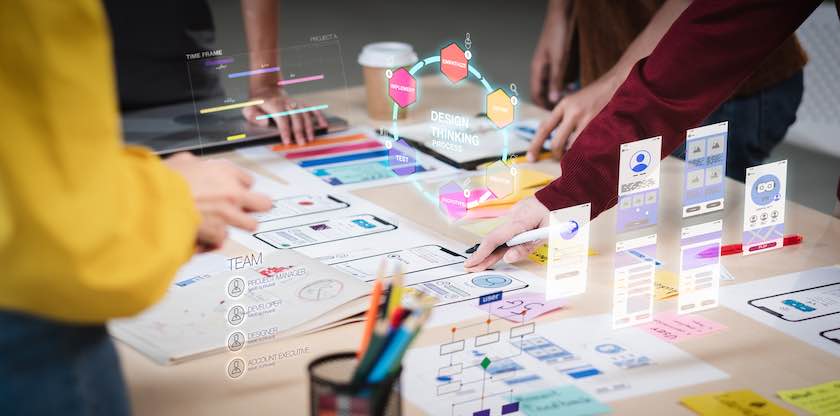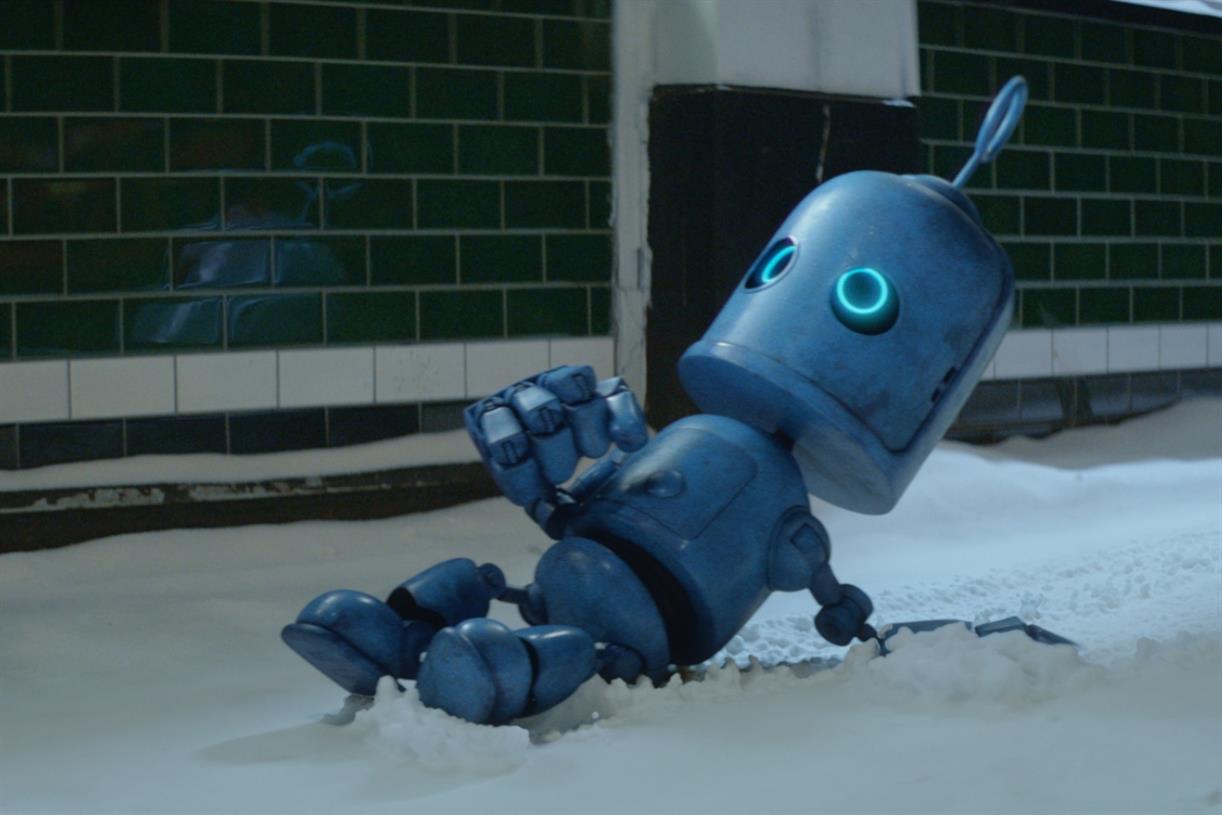AI & UX: Will AI Replace UX Designers?
The customer has always been the driving force behind innovation in business. This sentiment is reaching new levels now with the help of artificial intelligence and machine learning. As a result, AI and user experience are improving hand in...

The customer has always been the driving force behind innovation in business. This sentiment is reaching new levels now with the help of artificial intelligence and machine learning. As a result, AI and user experience are improving hand in hand.
Businesses are in intense competition to develop apps, websites, or other software with the perfect user experience. The help of artificial intelligence and machine learning brings them closer now to reaching their goal more than ever.
But with AI’s meteoric rise, the question about its threat to job security is beginning to occupy the minds of the general public. It’s a unique trend, especially for designers who already rely on AI and ML for user experience to do their jobs more efficiently. But how does the future of artificial intelligence and user experience look?
How Do AI and UX Co-Exist?
UX design is an industry getting bigger every year, and the statistics confirm the unstoppable development. UX investments have an amazing ROI potential of 9,000%. Another growing field, AI, also offers its advantages to all industries.
As a result, AI and UX build a beneficial relationship. That probably won’t surprise anybody considering AI touches every corner of every industry and business. Still, AI and UX are more intimate than one might initially think.
This relationship is based on AI’s ability to help AI UX designers do their jobs faster and better. As a result, AI has become a helpful tool to help UX designers in various ways without taking any significant risks.
Gathering Data
Data gathered from past user interactions is a gold mine for AI UX designers during the development process. Especially AI in digital marketing relies on this phenomenon. The data allows them to inspect patterns and predict user behavior, which helps them streamline their software.
AI can help UX designers collect data from usability tests and tracking experiments and then analyze the data to detect patterns. Seemingly a simple task, but this practice gives them a better knowledge base to work with and helps them improve their products.
Automation
Thanks to automation, the hours needed to complete simple and repetitive tasks manually are decreasing. AI is playing a big part in this change with its ability to do easy tasks with little human input now. Modular design makes automation ever more straightforward.
Things like lower website load times and application optimization are highly repetitive tasks that are at this point nailed to science. In a short amount of time, AI-powered performance optimization tools can adjust settings for websites, try different options and find the best one, saving valuable time for optimization engineers in the process.
AI can also find relevant images that fit your website faster and give options to UX designers so they won’t have to go through the hassle of choosing between thousands of pictures—speaking of options.
Providing Options
Even if AI doesn’t create perfect design solutions tailored to each customer’s needs, they are still very efficient at providing options. For example, based on their information, like user preferences for specific color patterns or UI designs.
AI helps UX designers not by making design decisions but by providing useful options and creating mockups of what a UI design might look like. Then the mockup can be adjusted and tweaked on a UX design tool for the more detailed aspects of the design.
UX designers still make the final call on how the end product will look and function. Still, by allowing designers to work quickly on an automatically generated prototype, AI is saving time for UX designers. Also, ML for user experience improves the options each time by learning from the designer’s behavior.
Will AI Replace UX Designers?
The question is quite cliché in all industries: Will AI eventually take over the human job? So naturally, a UX designer’s job is included. However, we need to see reality: while AI is getting smarter and more complex every year, human UX designers using AI are gaining more time for creativity and smart choices.
Which one will pass the other and win the race? Nobody knows. There is no limit to how far AI technology can go, but the human mind creates wonderful projects.
The common consensus seems to be a mix of mild doubt and curiosity. This results from developers’ belief in AI and their knowledge of AI’s historical shortcomings.
Understanding Human Motivation
Even the most complex AI lacks the capability of understanding human motivation (yet). It can gather information, see patterns and make an educated guess for the future. But, for now, artificial intelligence lacks the capability of truly understanding human behavior.
On the other hand, UX designers know how human beings act and think. Therefore, they can better understand how a design aspect will go with the users without even testing the design and gathering information because they understand human motivations better.
Important note: The tricky part is that they may get blinded by their own motivations, thoughts, and prejudices. Artificial intelligence, however, approaches situations from a neutral perspective.
Creativity
Creativity is still an ability that is only inherent to humans. You can use AI by giving it information about the design you want, and it will easily create a decent-looking model. But because it will be based on past designs, the end product will be inherently derivative.
That’s why people best make new innovative designs and creative aesthetic decisions. AI UX designers can come up with groundbreaking new ideas that change the design world for a few years and lead the way in aesthetics. But the best an AI could do would be a similar product that has already been made in the past.
Human Relations
We, humans, are social. No matter how good AI gets, it will still be hard to achieve the natural flow of a conversation between two humans. No matter how many improvements are made to chatbots, people still feel weird using them.
UX developers are still better at designing better interactions, understanding people’s problems, and learning their preferences to provide user experience solutions. Therefore, AI interaction designed empowered with human skills is greater than simply machine-made interaction processes.
Decision Making
AI notices things and provides information while humans make the decisions. That’s how the UX industry works right now. Final decisions are too important for customer satisfaction to be left in the hands of automation.
It is said that 70% of online businesses fall through because of bad UX. So it’s always wise to get your back lean on the unbiased and simplified knowledge of AI and enrich this knowledge with human intervention while making a decision.
Key Takeaways
Is there any reason to think AI will completely replace us and push UX designers out of a job? Probably not. Lower budget jobs might be more and more automated in the future because companies with fewer resources won’t be able to hire the best UX designers and UX design agencies. But the gold standard in user experience will likely be achieved by human beings in the foreseeable future.
So good news! Humans still rule the UX world. And the advancements in AI are helping them more and more each time there are new improvements. AI helps us more than some like to admit.
It takes some of the work out of a UX designer’s plate, but the lion’s share of labor is still getting done by humans.

 Koichiko
Koichiko 










![8 Easy Social Media Marketing Tips for Introverts [+Best Apps]](https://blog.hubspot.com/hubfs/introvert-social-media-marketing-tips.jpeg#keepProtocol)





















